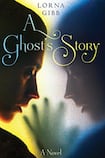
Most novelists work hard to hide their research and let the story come alive on the page. But in her debut novel Lorna Gibb deliberately puts researchers and their work centre stage, to mixed effect.
Gibb excavates an exciting world – spiritualists and seances of the 19th and early 20th centuries – in a work of biographical fiction that lacks the cohesion of a novel. Populated with real-life believers and mediums from the US to Britain to Italy, A Ghost's Story offers a pastiche of true stories that sometimes engages but struggles to hold the fictional form.
Voice can be tricky for writers of historical fiction, who must balance real life with imagination. Gibb originally intended to write a biography of Katie King, a spirit presence who found international fame through the spiritualist movement of the 19th century.
Instead, the author creates a convincing and likeable fictionalised Katie, whom we first meet in early 19th-century Ohio. Katie, sometimes referred to as John King, bears witness to a human world she can only embody through various mediums: "I am non-corporeal and can't really speak in the way that a human might. I have to implant anything I would like to say into someone's head."
Summoned at random by various mediums, Katie is not in control of her own destiny and must travel all over the world to help promote the practice of spiritualism. The tricks that practitioners and mediums use to encourage belief, which Katie explains and sometimes mocks, make for an entertaining read.
The “real faith behind the necessary artifice” is a recurring theme. Phosphorus, ectoplasm, sleights of hand, false bottoms on bags, and instruments that make noise or cause things to levitate all feature. The way the mediums and their agents prey on people’s grief and desire is highlighted by Katie’s narrative.
Sex and death
For all their petticoats, those canny Victorians were well aware that sex sells. Beautiful young women, such as the real-life mediums
Florence Cook
and
Eliza White
, used their bodies as vehicles to excite and provoke. Sex and death are natural bedfellows, as shown in one of the novel’s best scenes, when Katie experiences a very public
petite
mort
at a seance involving her beloved,
Robert Dale
.
Katie’s attachment to Dale, a US politician and spiritualist, is mentioned often in the novel but never fully comes to life. Although a scene in an asylum for the insane gets us closer to his character, Dale is frustratingly obscure, as are the other long list of real-life characters referenced.
Some of these interesting historical titbits, such as Marie and Pierre Curie’s involvement in a London seance, and the writer Dion Boucicault’s belief in ghosts, keep the narrative going, but overall the story lacks vibrancy.
The biographical tone is to blame. Katie’s fragments are broken up with comments from the both the author herself and a fictional researcher, Adam, who moves from disbelief to belief over the course of his research. Clues to his own life and situation are given but never fleshed out. The revelation that Adam is terminally ill comes in the form of a footnote, and carries a similar amount of emotional impact.
Scenes towards the end of the book that delve more into Adam’s illness, his reasons for believing, his tragic last few days and his parting with his lover, Peter, are well written and moving, but the characters need an earlier introduction and more prominence. It is the human story behind the ghost story and merits more attention.
As a chronicle of the heyday of spiritualism, the novel has much to recommend it. Originally from Scotland, Gibb works as a lecturer in London and has published two biographies, Lady Hester: Queen of the East and West's World: The Extraordinary Life of Dame Rebecca West.
As befits the biography genre, the author has a meticulous eye for historical detail and writes evocatively, particularly on the atmosphere of seances and in passages about sickness and death: “The metallic smell of iron filled the room, her screams changed to weeping, as more and more blood followed the dead child.”
There are glints of humour in Katie’s voice as she contends with the world (“I find the human preoccupation with the weather extremely tedious”), as well as in her upwardly mobile tendencies as she latches on to the next big thing in spiritualist circles. An omniscient ghost is a clever narrative device, but ultimately Katie gives us the stories, often in a detached, matter-of-fact tone, of too many characters to make lasting impressions.
The commendable research that has gone into A Ghost's Story elevates it in terms of detail, but it also drags the novel down. For all its discussion of the benefits of artifice, the book leans more towards biography than towards fiction. This is a story of ghosts and hauntings that, ironically, never comes to life.









